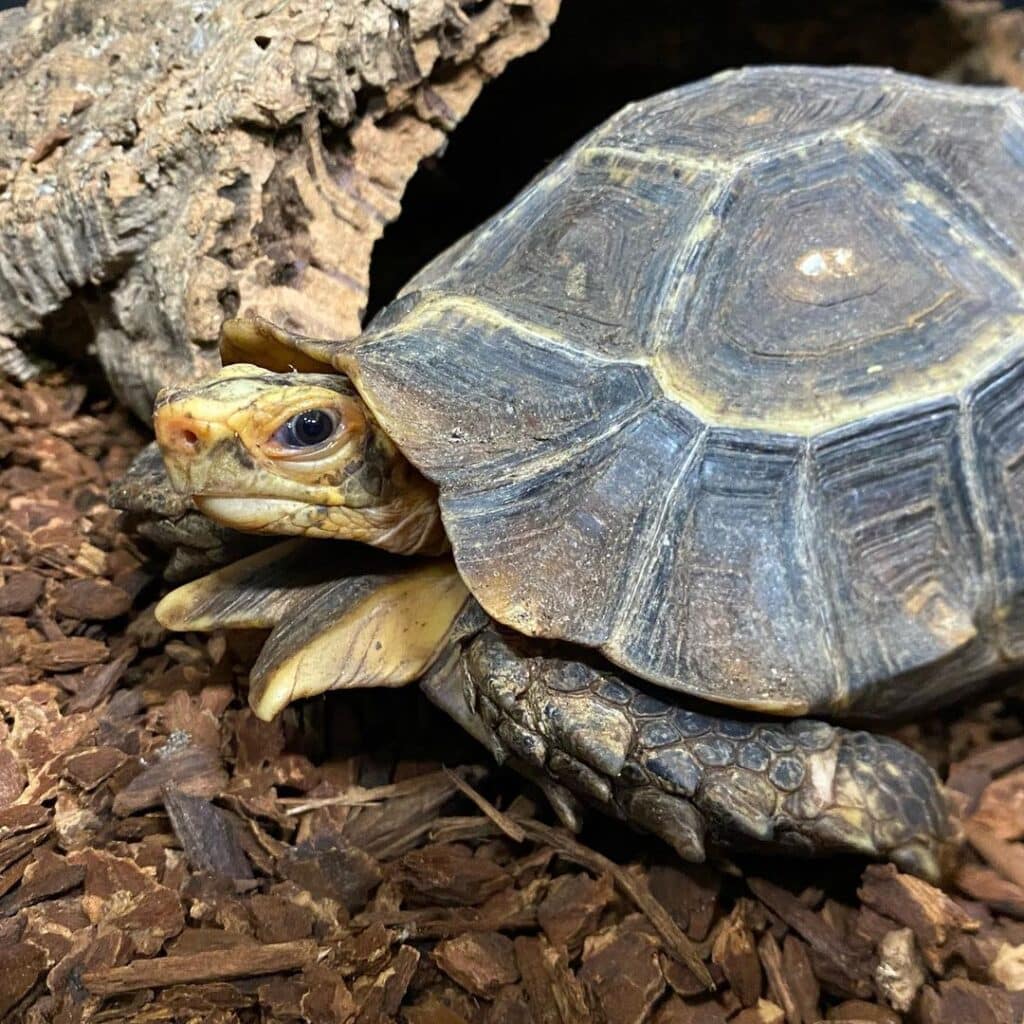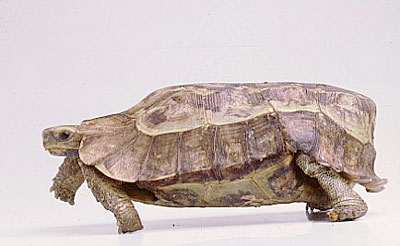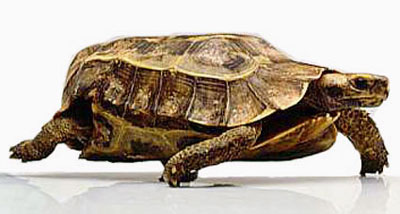Serrated Hinge Back Tortoise
Scientific Classification
| Kingdom: | Animalia |
| Phylum: | Chordata |
| Class: | Reptilia |
| Order: | Testudines |
| Family: | Testudinidae |
| Genus: | Kinixys |
| Species: | K. erosa |
| Binomial name: | Kinixys erosa |
We can identify the Hinge Back tortoise, binomial name Kinixys Erosa, easily by its hinged carapace or upper shell. The hinged carapace permits the shell’s rear to close, thereby protecting the hind feet and the tail. This tortoise is tough and vigorous. They adapt to life in captivity quite easily. They prosper in almost all climates. Certain hinge-back species from some areas outside South Africa are comparatively difficult to maintain since they always require high levels of humidity. This serrated or forest hinge-back tortoise also referred to as a Schweigger’s tortoise belongs to the turtle species under the family Testudinidae and is native to West and Central Africa.

Anatomy

The shell of the hinge-back is angular and sloping. They grow to a maximum length of about 9 to 14 inches. The color is reddish brown. Some shells display yellow markings. The head and limbs are brown or yellow. These tortoises belong to the genus Kinixys. The unique peculiarity of the genus is the hinge we can see across the back of the upper shell. They are the only tortoises extant that possess this kind of shell.
Behavior
The serrated hinge back tortoise has the unique ability to bend its back by ninety degrees to protect its hind legs and tail while sleeping, or during an attack from predators. These tortoises are excellent swimmers. They can dive. Hinge-backs navigate the water bodies in the rain forests for food. Female tortoises lay up to four eggs in a a clutch on the ground and cover them with leaves.
Habitat
We can spot the Serrated hinge back tortoise throughout east and central Africa. They are comfortable in savannas, grasslands and coastal bushes. The shyer tortoises that prefer forest regions are Thornveld. K.Homeana species and K.Erosa.
The hinge back is native to Africa’s sub- Sahara rainforests. We can find them in river banks and marshes. They spend most of their time hiding under logs and roots.
The hinge back’s natural range is quite exhaustive. It extends from the northern parts of Angola, all through the Congo basin, up to the shores of Victoria Lake. We can also find them spread through the forests of West Africa, as far as Senegal. You can also find them in particular in Burkina Faso, Central African Republic, Cameroon, Democratic Republic of Congo, Gabon, Equatorial Guinea, Ghana, Liberia, Ivory Coast, Sierra Leone, Nigeria, Rwanda, Liberia, Uganda and perhaps in Togo, Benin, and Guinea-Bissau
As a Pet
The serrated hinge back tortoises are very popular as pets. Since they attain only 9 inches long, they make excellent terrarium pets.
Breeding
The hinge backs’ mating occurs during the rainy season starting from November and extending to February. The primary egg laying also happens during this period. They lay clutches of 1-3 eggs. The eggs incubate for a period of five or more months. The eggs are comparatively large; as much as 46×35 mm and spherical or oval shaped. The shells are rather brittle. The hatchlings measure less than 5 cms. Their brown carapaces appear flattened without any hinges.
Housing
You can allow the hinge back a free run of your garden as long as it enjoys sufficient protection and is of reasonable size. They are expert climbers and diggers. So escapes are not uncommon. If you use an enclosure for your tortoises, make sure that the size is at least 5 meters X 3 meters for a pair. These creatures are rather shy. They will relish a well planted enclosure that can provide them with enough food and ample cover for concealment. Pampas grass and small shrubs are ideal for sleeping under and escaping from the midday sun’s heat. Hinged tortoises are active and feed rather early in the morning. They retire to a cool spot when the heat becomes too much for them. They come out in the late afternoon, browse for a very short time and retire. Hinged tortoises certainly do not suffer from claustrophobia. On the contrary, they love sleeping in confined spaces. Any sleeping shelter that you provide should be just bigger than their shell and well stocked with dry grass for them to burrow into.
Food

Hingeback tortoises are not finicky eaters. They are omnivores which means that they will eat anything, including edible grass, small invertebrates, vegetables, weeds, fruits and carrion. The following food items can be tried for your hingeback tortoises. Spinach, lettuce, cauliflower, beans, broccoli and carrots. You may have to cook these to soften them up. You can try banana, clover, dandelions, carrots, cress, cucumber, grapes, peach and other soft fruits. Insects and worms including meal worms, millipedes, slugs, snails, partially cooked small fish, beetles, crickets and earthworms. Some of these tortoises take scrambled eggs for breakfast, with a fair sprinkling of alfalfa sprouts. You can also feed them thinned cat and dog food, chopped liver and meat. Just make sure that the diet is balanced. 50 % Vegetables and 50% meat will do the trick. The young hinge-backs are almost complete carnivores. You must use good mineral and vitamin supplements always. This species does not hibernate. On the contrary, they aestivate. (Dose down for the duration of the summer.) You should try to imitate their natural habitats.
Temperature
You must keep terrarium temperatures for these tortoises during the day at around 85 to 90 F, and make sure to provide a basking spot with the aid of a good quality UVB lamp, preferably, a Reptisun bulb
Threats
Many people hunt the serrated hinge back tortoise for its meat. The clearing of rainforests has greatly restricted the proliferation of these animals. Habitat destruction has also affected this tortoise badly.
Handling
Your pet tortoise is a unique creature. Tortoises are the longest of all living animals on earth. Each tortoise is highly individualistic. Most of them tame down with time. You should come to know your tortoise very well. Give it your best attention. Plenty of common sense and good hygiene will ensure that you do not transfer any disease to your per and vice-versa. Wash your hands after handling your pet. Limit children handling the pets since they are more susceptible to worm infestations.

Having discovered a fondness for insects while pursuing her degree in Biology, Randi Jones was quite bugged to know that people usually dismissed these little creatures as “creepy-crawlies”.







